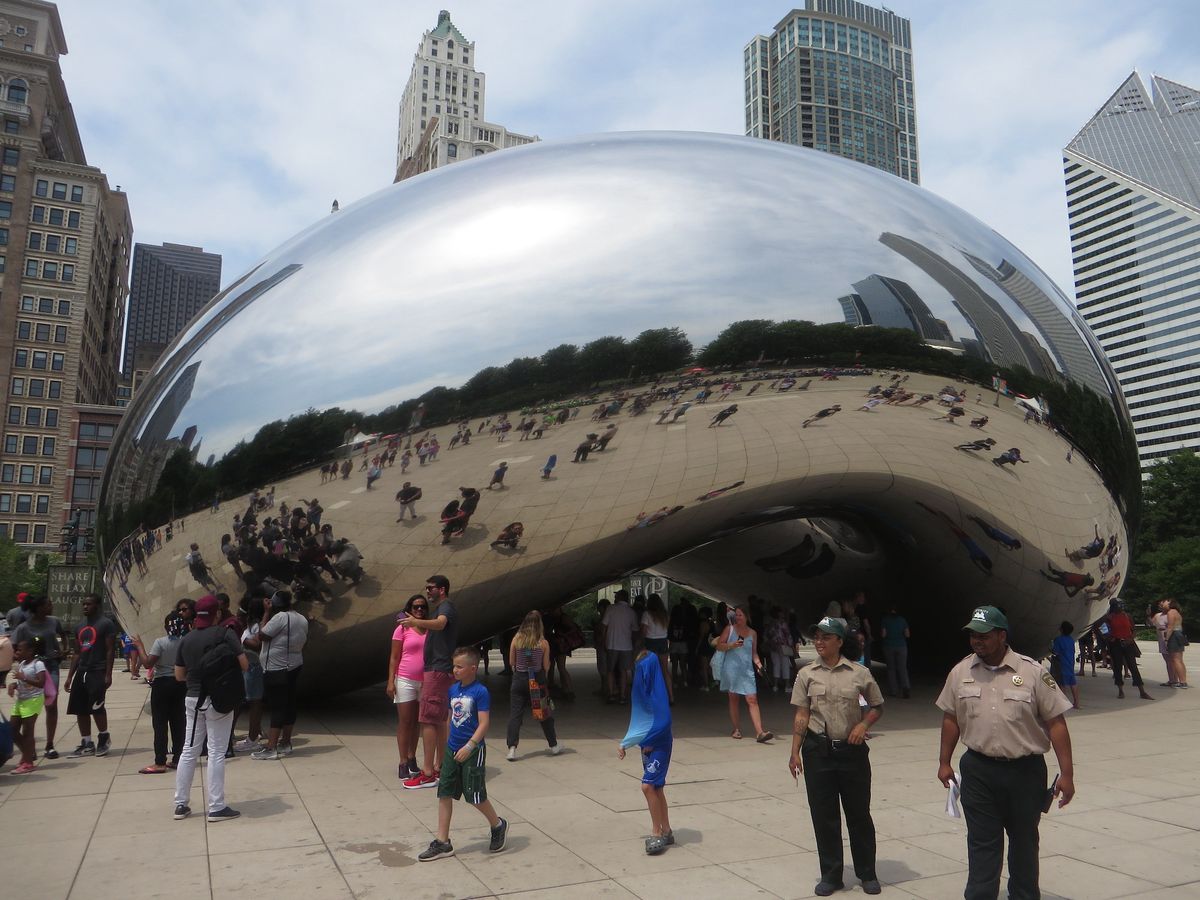Construction on the plaza surrounding Anish Kapoor’s Cloud Gate (2006), the stainless steel sculpture better known by its nickname “the bean”, means access to Chicago’s leading selfie destination will be restricted well into 2024, the city says.
Construction on Grainger Plaza (formerly known as the AT&T Plaza) in Chicago’s Millennium Park began this week and will last until spring 2024, according to an alert on the Chicago Department of Cultural Affairs and Special Events website. During that time period, public access and views of Cloud Gate will be limited. The construction project, which the department called “necessary maintenance”, will replace the plaza’s pavers and upgrade the 20-year-old park’s appearance and accessibility.
At 33ft high, 42ft wide and 66ft long, Cloud Gate is one of the largest public art installations in the world. Inspired by the appearance of liquid mercury, the sculpture is made from 168 stainless steel plates welded together and cost a total of $23m. The highly polished exterior reflects the image of visitors and the surrounding city skyline, and has helped make Millennium Park in downtown Chicago the top attraction in the midwestern US.
“Public objects have a weird way of morphing … In one way, Cloud Gate is mine. But, in another way, it has taken on all kinds of other lives,” Kapoor told the Chicago Sun-Times in 2017. “It has incorporated the life of all those millions of people who have taken wedding pictures there or otherwise posed in front or beneath it. And they now own it more than I do. It is the ultimate selfie object.”
The sculpture has also become a recognizable symbol of Chicago, and has been featured in multiple movies and television shows. Kapoor reached an out-of-court settlement with the National Rifle Association in 2018 after filing a copyright infringement lawsuit over the American gun rights group’s use of the sculpture in a promotional video.
Earlier this year, a similar sculpture by Kapoor was completed in New York’s Tribeca neighbourhood. It was commissioned nearly 15 years ago and was delayed by the Covid-19 pandemic and the 2008 financial crisis. (It, too, is currently only partially visible due to adjacent construction.)


